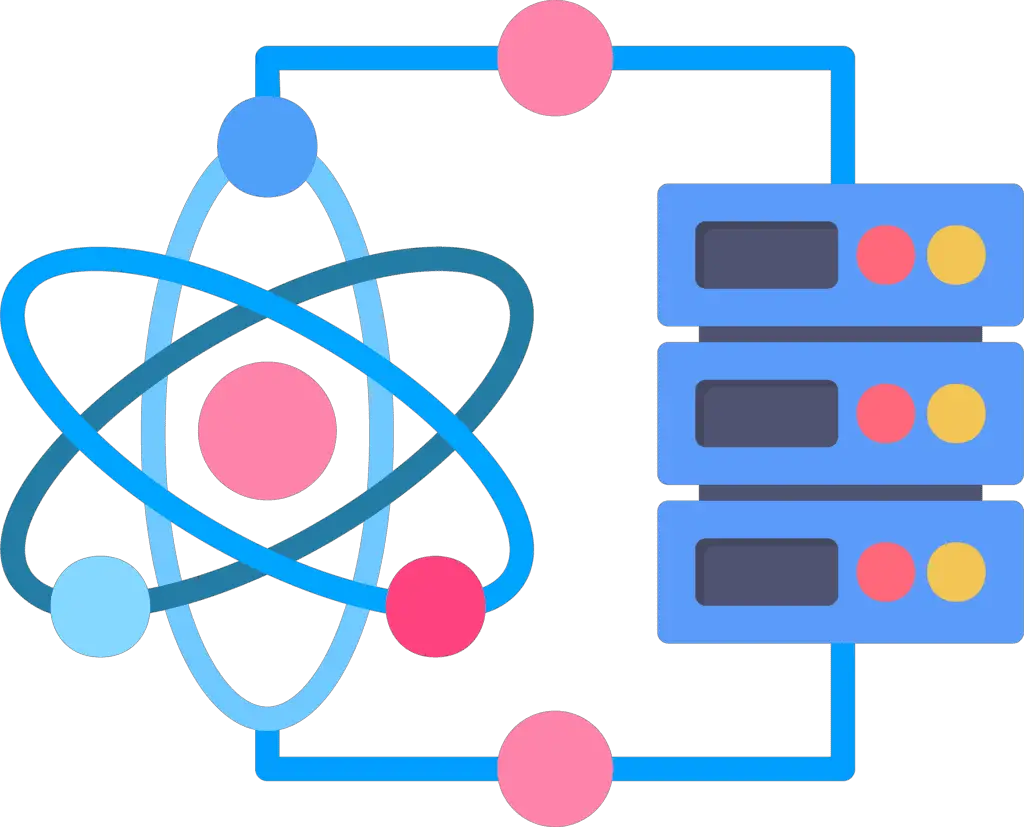Best 30 machine learning final year project
This article provides 30 unique machine learning final-year projects, offering exceptional academic and professional growth opportunities. These projects provide valuable concepts essential for computer science students in their final year. The most significant benefit of machine learning is that it opens up new options and makes it possible to create incredible projects.
1. Fabric Defect Detection
Introduction: Detecting fabric defects is crucial in the textile industry for high-quality production. It involves identifying imperfections like stains, holes, or misleading, which impact product quality and customer satisfaction. Machine learning enhances detection efficiency, automating the process for more accurate inspection. This fabric defect detection system uses a Convolutional Neural Network (CNN) algorithm. CNNs are deep learning algorithms specifically designed for image recognition tasks. The algorithm learns to identify standard and defective fabrics by studying labeled images with distinct visual characteristics of defects.
Problem Statement: The textile industry needs help maintaining consistent product quality due to the limitations of the manual inspection process. Human Inspectors might miss minor defects, which could affect the quality of the product. Automating defect detection using machine learning provides a better and faster solution to identify defects in real time during manufacturing.
2. Plant Disease Detection
Introduction: In agriculture, plant health is crucial for a good harvest. Diseases can harm plants and reduce food production. The system can rapidly and accurately identify plant diseases, allowing farmers to intervene promptly. Convolutional Neural Networks (CNNs) are algorithms that recognize image patterns, making them ideal for plant disease detection.
Problem Statement: Traditional disease detection methods are often time-consuming and rely heavily on human expertise. The Plant Disease Detection system enables farmers to swiftly and precisely identify plant diseases. This system allows them to take targeted actions to prevent losses.
3. Credit Card Fraud Detection
Introduction: Credit card fraud detection uses machine learning to protect financial transactions by identifying unusual activity. It works by analyzing patterns to spot any signs of fraudulent behavior. One key algorithm used in Credit Card Fraud Detection is the Random Forest algorithm. This intelligent system combines the predictions of multiple decision trees to enhance accuracy.
Problem Statement: Credit card fraud detection is crucial due to increasing online fraud. Traditional systems struggle to keep up, so advanced machine-learning algorithms are necessary.
4. Phishing Website Detection
Introduction: The “Phishing Website Detection” system is a vital tool that detects and stops deceptive online activities. Phishing websites deceive users into giving away sensitive information, a significant cybersecurity threat. This system uses machine learning to identify and reduce these websites’ risks effectively.
Problem Statement: Phishing attacks are a significant problem in the digital age. Hackers create fake websites to trick people. This project aims to create a system that can quickly find and stop these fake websites, making the internet safer.
5. Heart Disease Detection
Introduction: The “Heart Disease Detection” system uses machine learning to predict and identify the likelihood of heart diseases in individuals. Detecting cardiovascular diseases early is crucial for preventing deaths caused by them since they are a significant cause of death globally. The system assesses the risk of heart disease based on various health parameters. The algorithm used is a Support Vector Machine (SVM). SVM is good at classification tasks, like predicting if someone is at risk of heart disease.
Problem Statement: To reduce heart disease, we must identify at-risk people. Traditional methods that rely on manual analysis may need to be more effective in efficiently managing the complexity of diverse health data.
6. Breast Cancer Detection
Introduction: The “Breast Cancer Detection” system uses machine learning to help diagnose breast cancer early. Breast cancer is a widespread and potentially fatal illness, and detecting it early greatly enhances treatment results. This system uses advanced machine learning to analyze medical data and identify meaningful patterns related to breast cancer.
Problem Statement: The challenge in breast cancer diagnosis lies in accurately distinguishing between benign and malignant tumors, especially in the early stages when symptoms may not be apparent. Traditional diagnostic methods may have limitations, so this system solved these limitations.
7. House Price Prediction
Introduction: House Price Prediction is an intelligent application that uses machine learning to estimate the price of houses based on various factors. Whether you’re a home buyer, seller, or just curious about real estate, this system provides valuable insights into property values. We use data and algorithms to improve the accuracy and accessibility of predicting house prices.
Problem Statement: The real estate market is complex, and determining the fair market value of a house involves considering numerous variables. Buyers and sellers often need help to accurately determine the value of a property, which can result in mispricing and financial dissatisfaction. House Price Estimation aims to tackle this problem using machine learning algorithms to offer accurate and data-driven predictions.
8. Big Mart Sales Prediction Machine Learning Project
Introduction: This Project aims to revolutionize the retail industry by using predictive analytics to forecast sales. It’s like having a crystal ball that helps store owners prepare for how much of their products will be sold. This system allows for better inventory management and ensures customers find what they need when needed. Our project used a machine learning algorithm known as regression. In essence, regression helps us understand the relationship between various factors (like product visibility, store size, and promotional activities) and the sales of products. We train the algorithm using historical sales data, enabling it to predict future sales based on these learned patterns.
Problem Statement: One of the significant challenges retailers face is the uncertainty surrounding product demand. This system often leads to overstocking or understocking, affecting profits and customer satisfaction.
9. Stock Prices Predictor using Time Series
Introduction: Predicting stock prices is complex but essential in finance. Our project aims to forecast future stock prices by analyzing historical data using time series analysis and machine learning. This will help investors make informed decisions in the stock market.
Problem Statement: The stock market is unpredictable, which makes it hard to predict prices. Investors deal with uncertainty because of market sentiment, economic indicators, and global events.
10. Loan Eligibility Prediction
Introduction: Loan Eligibility Prediction is a helpful tool designed to assist financial institutions in evaluating whether an individual is eligible for a loan. The project aims to simplify the lending process, making it more efficient and fair. Our system used a machine learning algorithm known as a predictive model. This model is trained on historical loan data, learning to identify patterns and relationships among different features such as income, credit score, employment status, and debt-to-income ratio.
Problem Statement: Traditional loan approval processes can be time-consuming and may only sometimes consider a wide range of criteria.
11. Human Activity Recognition using Smartphone Dataset
Introduction: This machine learning final year project idea is very unique. The Human Activity Recognition using Smartphone Dataset project uses smartphone data to identify and classify human activities. This system uses the sensors in wearable devices and smartphones to recognize actions like walking, running, and sitting.
Problem Statement: Human Activity Recognition is essential in health monitoring, sports analytics, and creating context-aware applications. We aim to provide valuable insights for personalized services and health assessments and improve mobile application user experience by automatically detecting and categorizing human activities.
12. Ultrasound Nerve Segmentation
Introduction: Ultrasound Nerve Segmentation is vital in medical imaging and involves identifying and outlining nerves in ultrasound images. This project aims to develop a system that automates the process of nerve segmentation, providing healthcare professionals with accurate and efficient tools for diagnosis and treatment planning. We use machine learning to improve the accuracy of finding nerves in ultrasound scans.
Problem Statement: The manual segmentation of nerves in ultrasound images is a time-consuming and subjective task, heavily reliant on the expertise of medical professionals. Automating this process can significantly reduce the workload, enhance consistency, and improve the accuracy of nerve identification.
13. ASL Recognition with Deep Learning
Introduction: ASL (American Sign Language) Recognition with Deep Learning is a project aimed at developing a system capable of understanding and interpreting sign language gestures using deep learning techniques. Sign language is essential for people with hearing impairments. Computers are being taught to understand American Sign Language to help bridge the communication gap.
Problem Statement: The motivation behind developing ASL Recognition with Deep Learning is to enhance accessibility for individuals with hearing impairments. Traditional communication barriers can be eased by enabling computers to understand sign language, allowing for more inclusive interactions in various settings, from education to everyday communication.
14. Stock Market Analysis And Forecasting Using Deep Learning
Introduction: The project is designed to harness the power of advanced technologies to understand stock market trends and predict future price movements. Stock market forecasting, recurrent neural networks (RNNs), or extended short-term memory networks (LSTMs) are commonly used. These networks can capture complex patterns and dependencies in historical stock data, enabling them to make more accurate predictions.
Problem Statement: The stock market is known for its dynamic and unpredictable nature, making it challenging for investors to make informed decisions. This project addresses the need for a more advanced approach to stock market analysis that goes beyond traditional methods.
15. Food Delivery Time Prediction using Python
Introduction: Food Delivery Time Prediction using Python is a project designed to estimate the time it takes for food delivery to reach its destination. In the fast-paced world of food delivery services, this system aims to provide users and delivery platforms with accurate predictions, enhancing the overall experience for customers and optimizing delivery operations. The heart of this project lies in using regression algorithms, a machine learning model, to predict delivery times. Standard regression algorithms like Linear Regression or Decision Trees are employed. These algorithms analyze various factors such as distance, traffic conditions, and historical delivery times to predict how long it will take for the food to be delivered.
Problem Statement: The need for Food Delivery Time Prediction arises from the desire to improve customer satisfaction and optimize delivery operations. More accurate time estimates can lead to customer satisfaction and impact the efficiency of delivery logistics. The system improves delivery time predictions and enhances the experience for customers and delivery providers.
16. Water Quality Analysis
Introduction: Water Quality Analysis is a project aimed at assessing the condition of water through the use of technology and machine learning. This system analyzes various parameters of water samples, such as pH levels, dissolved oxygen, and contaminants, to determine the quality and safety of the water. In this project, machine learning algorithms, particularly regression and classification models, are employed. These models are trained on datasets containing information about water quality parameters and corresponding labels indicating whether the water is safe.
Problem Statement: The significance of this system lies in addressing the increasing concern over water pollution and its impact on public health. With growing industrialization and urbanization, monitoring water quality becomes crucial.
17. Spam Detection with Machine Learning
Introduction: The Spam Detection with Machine Learning project helps filter out unwanted spam messages that attack our inboxes. It improves the user experience by keeping communication channels clear and safe. The system uses machine learning to tell apart real messages from unwanted spam. The model is trained by standard algorithms such as Naive Bayes, Support Vector Machines, or Decision Trees. The algorithm learns from labeled datasets with examples of spam and non-spam messages. It uses this knowledge to predict new, unseen messages accurately.
Problem Statement: Spam messages are a big problem. They flood our communication channels and can be dangerous because they often contain phishing attempts and malware. This system automates sorting through large amounts of messages, saving users time and protecting them from potential threats related to harmful spam content.
18. Click Through Rate Prediction with Machine Learning
Introduction: It is a powerful tool designed to enhance online advertising strategies. Through Rate represents the ratio of users who click on a specific ad to the total number of users who view the ad. Predicting CTR is crucial for advertisers to optimize their campaigns and allocate resources effectively.
Problem Statement: Online advertisers need to understand and predict user engagement. They want to optimize their campaigns to get more clicks and conversions. The Click-Through Rate Prediction with Machine Learning system uses various factors to estimate if a user will click on an ad. This project helps advertisers improve their strategies and get better results.
19. Pneumonia Detection System
Introduction: The “Pneumonia Detection System” is an application designed to assist in promptly identifying pneumonia through advanced medical imaging analysis. Pneumonia, a respiratory condition, can be challenging to diagnose accurately.
Problem Statement: The challenge lies in the early and accurate diagnosis of pneumonia, as delays can lead to complications and compromise patient outcomes. Traditional methods may require extensive manual analysis by radiologists, leading to potential delays in treatment initiation.
20. Hand Gesture Recognition System
Introduction: It is an innovative technology designed to interpret and respond to human hand gestures. This system utilizes machine learning algorithms to recognize and understand the gestures made by users, allowing for effective interaction with electronic devices without needing physical touch or conventional input methods.
Problem Statement: Traditional input methods for electronic devices may only sometimes be convenient or practical, especially when touch-based interactions are challenging or undesirable.
21. Earth Quake Prediction Model
Introduction: The Earthquake Prediction Model uses machine learning to forecast earthquakes. This model analyzes seismic data and gives early warnings to help lessen the impact of earthquakes. The model uses machine learning algorithms, focusing mainly on recurrent neural networks (RNNs) and long- and short-term memory (LSTM) networks. LSTMs are well-suited for time-series data, making them effective in capturing and understanding the temporal patterns of seismic activities.
Problem Statement: Earthquakes can be dangerous, but if we give early warnings, we can reduce the damage and keep people safe. Traditional earthquake prediction methods often need to provide timely and accurate forecasts.
22. Deep-fake Detection System
Introduction: It is a project designed to counter the growing threat of deep-fake technology, where artificial intelligence is used to create realistic fake videos or images. The project aims to create a system that can accurately detect and flag deep-fake content to prevent potential misuse.
Problem Statement: The rise of deep-fake technology poses significant challenges, as malicious actors can use it to produce wholly fake but believable content. This can lead to misinformation, privacy breaches, and the potential manipulation of public perception.
23. Fake Currency Detection With Machine Learning
Introduction: The “Fake Currency Detection System with Machine Learning” is a technological solution to identify counterfeit currency notes. In today’s world, the prevalence of fake currency poses a significant threat to financial systems and businesses. This system uses machine learning to tell genuine banknotes from fake ones, making currency verification reliable and efficient. SVM is well-suited for tasks like currency detection, where patterns and features in the banknotes can be effectively learned and classified. The algorithm is trained on a dataset containing features extracted from both genuine and counterfeit currency notes.
Problem Statement: Fake currency remains a significant challenge for financial institutions, businesses, and individuals. Traditional methods of detecting fake notes are often time-consuming and may need more precision.
24. Personality Prediction from Text
Introduction: It is a very innovative and unique machine learning final-year project. This project is an innovative application of machine learning designed to analyze and predict an individual’s personality traits based on textual data. Text, such as written content or social media posts, serves as a valuable source for understanding human behavior, and this project aims to use that information for personality insights. The project used Natural Language Processing (NLP) and machine learning algorithms to extract meaningful patterns and features from the text.
Problem Statement: Understanding someone’s personality is essential for giving personalized recommendations, targeted marketing, and improving user experiences. Traditional ways of assessing personality can take much time and be subjective.
25. Build CNN for Image Colorization using Deep Transfer Learning
Introduction: The project applies CNNs to add color to black-and-white images, changing the conventional approach. This technology adds vibrant colors to black-and-white photos, making them look vivid and lifelike. It improves the visual experience and preserves historical and monochromatic content.
Problem Statement: Historical photos, black-and-white images, and grayscale content often lack the vibrancy and context provided by color. The CNN for Image Colorization addresses this challenge by automating the process of adding color to such images. This system not only revitalizes old photos but also aids in creating visually appealing content for various applications, including media production, archiving, and artistic activities.
26. Fake profile identification Machine learning
Introduction: The “Fake Profile Identification” project uses machine learning to detect and identify fake profiles on different online platforms. In today’s digital world, the increase in fake profiles presents serious risks, such as social media scams and fraud. This project offers an automated solution to effectively identify genuine and fake online profiles. The project used a machine learning algorithm utilizing supervised learning techniques. Specifically, a classification model is trained on a dataset with features indicative of genuine and fake profiles. The algorithm learns to recognize patterns that differentiate authentic user profiles from false ones.
Problem Statement: Fake profiles on social media and other online platforms can lead to various issues, such as misinformation, cyberbullying, identity theft, and financial scams.
27. Detecting Malware Websites using Machine Learning
Introduction: The project is a robust cybersecurity initiative designed to identify and mitigate the risks associated with malicious websites. This project uses machine learning (ML) techniques to detect and prevent cyber threats from infected websites, keeping users’ security safe.
Problem Statement: Online threats are everywhere, and users are always in danger of finding malware on harmful websites. Current ways of stopping these websites could be faster and more reactive than cybercriminals’ new tactics. This system solved these problems.
28. Groundwater level Prediction using Machine Learning
Introduction: The Groundwater Level Prediction using Machine Learning project is a predictive analytics system designed to forecast groundwater levels based on historical data and environmental factors. Groundwater levels play a crucial role in water resource management, and this project aims to provide accurate predictions for informed decision-making in water-related applications.
Problem Statement: The availability and sustainability of groundwater resources are vital for agriculture, urban planning, and environmental conservation. However, predicting groundwater levels accurately is a complex task due to the influence of numerous variables. This project addresses the challenge of uncertainty in groundwater level fluctuations by employing machine learning to create predictive models.
29. Road accident Analysis and classification using Machine Learning
Introduction: The project aims to understand and categorize road accidents. This system uses machine learning to analyze and categorize different factors causing accidents, offering insights to improve road safety.
The project uses supervised machine-learning techniques to create an algorithm. It trains a machine-learning model using features like weather, road type, time of day, and driver behavior. Classification algorithms like Decision Trees and Support Vector Machines categorize accidents.
Problem Statement: Road accidents are a significant danger for the public and roads. Understanding why accidents happen is essential to prevent them. The system uses data to study accidents and help authorities take steps to reduce them.
30. Intrusion Detection System using Machine Learning
Introduction: The system is a robust cybersecurity solution designed to identify and mitigate potential security breaches in a network. In a world where cyber threats are constantly evolving, this system employs advanced machine learning techniques to enhance cybersecurity infrastructure’s detection and response capabilities.
Problem Statement: Cyber threats are getting more advanced, making it hard for traditional intrusion detection systems to keep up. We need a more innovative way to detect and respond to new attack patterns.
A solid understanding of machine learning concepts, programming skills (Python is commonly used), and familiarity with relevant libraries (such as TensorFlow or PyTorch) are recommended.
Research existing projects, identify gaps or areas for improvement, and add your unique twist. Consider how your project can address real-world challenges or bring about innovation.
Finding the right balance between complexity and feasibility in your project is essential. You want to challenge yourself and ensure the project is achievable within the given timeframe and available resources. It’s about pushing your limits while staying grounded in what is realistically attainable.
-
Where Do YouTubers Get Their Music?
-
Top 20 Machine Learning Project Ideas for Final Years with Code
-
Why Creators Choose YouTube: Exploring the Four Key Reasons
-
10 Advance Final Year Project Ideas with Source Code
-
10 Deep Learning Projects for Final Year in 2024
-
Realtime Object Detection
-
AI Music Composer project with source code
-
E Commerce sales forecasting using machine learning
-
30 Final Year Project Ideas for IT Students
-
Stock market Price Prediction using machine learning
-
c++ Projects for beginners
-
Python Projects For Final Year Students With Source Code
-
20 Exiciting Cyber Security Final Year Projects
-
10 Web Development Projects for beginners
-
Top 10 Best JAVA Final Year Projects
-
Fake news detection using machine learning source code
-
C++ Projects with Source Code
-
15 Exciting Blockchain Project Ideas with Source Code
-
Artificial Intelligence Projects For Final Year
-
How to Host HTML website for free?
-
Credit Card Fraud detection using machine learning
-
Hand Gesture Recognition in python
-
Hate Speech Detection Using Machine Learning
-
Best 21 Projects Using HTML, CSS, Javascript With Source Code
-
How to Download image in HTML
-
10 advanced JavaScript project ideas for experts in 2024
-
Best Machine Learning Final Year Project
-
Python Projects For Beginners with Source Code
-
20 Advance IOT Projects For Final Year in 2024
-
Plant Disease Detection using Machine Learning
-
Ethical Hacking Projects
-
Data Science Projects with Source Code
-
Top 7 Cybersecurity Final Year Projects in 2024
-
Artificial Intelligence Projects for the Final Year
-
portfolio website using javascript
-
Top 13 IOT Projects With Source Code
-
Phishing website detection using Machine Learning with Source Code
-
10 Exciting Next.jS Project Ideas
-
17 Easy Blockchain Projects For Beginners
-
10 Exciting C++ projects with source code in 2024
-
Best 13 IOT Project Ideas For Final Year Students
-
Heart Disease Prediction Using Machine Learning
-
Fabric Defect Detection
-
How to Change Color of Text in JavaScript
-
Wine Quality Prediction Using Machine Learning
-
Diabetes Prediction Using Machine Learning
-
10 Final Year Projects For Computer Science With Source Code
-
Car Price Prediction Using Machine Learning
-
10 TypeScript Projects With Source Code
-
Chronic Kidney Disease Prediction Using Machine Learning









